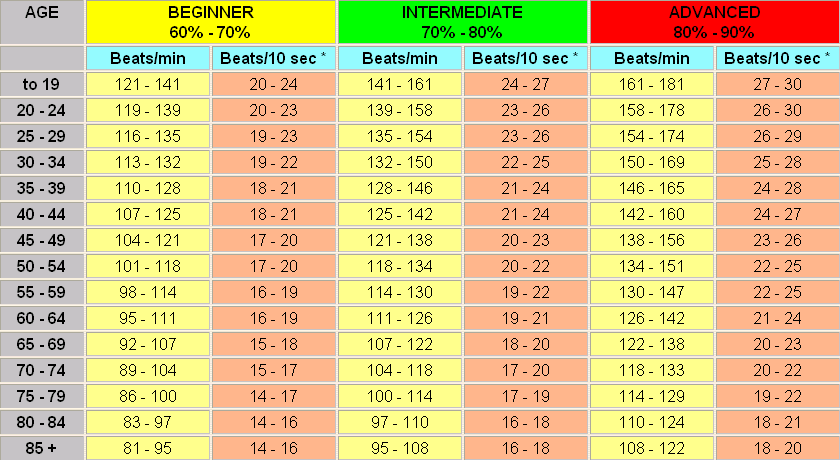A normal resting heart rate for adults is 2 between 60 beats per minute bpm and 100 bpm. In medical terms high pulse rate is termed as tachycardia which refers to a heart beating at a higher rate than usual.
Types of tachycardias Atrial or Supraventricular Tachycardia SVT Atrial or supraventricular tachycardia SVT is a fast.

What is considered a high heart rate. Usually most adults resting heart rate usually lies in the range of 60-80 beats per minute with some heart rates approaching 100 beats per minute. A fast heart rate is one that is unexpected for a certain level of physical activity. Genes play a role.
This usually requires medical attention. However a heart rate that is lower than 60 per minute does not necessarily mean that it is abnormal. Above 90 is considered high.
Doctors usually consider a heart rate of over 100 beats per minute to be too. The usual range for resting heart rate is anywhere between 60 and 90 beats per minute. View an animation of tachycardia.
Causes Of High Heart Rate Variability. The resting pulse rate is your heart rate when you are not exercising such as when you are watching a movie or reading a book. A high HRV is known to be a sign of a healthy heart.
February 03 2021 Food beverages and drugs can cause a higher resting heart rate. Most of the studies have found that a higher HRV is associated with lowered morbidity and mortality and enhanced psychological well-being and good quality. In SVT your hearts electrical system which controls the heart rate runs out whack.
Tachycardia or rapid heart rate may produce either a. Although tachycardia is considered relatively harmless it can decrease the efficiency of the heart by lowering. A normal resting heart rate for adults ranges from 60 to 100 beats per minute.
An abnormally high pulse rate above 100 beats per minute is also called tachycardia and it occurs when the heart tissues produce electrical signals rapidly affecting the upper or lower chamber of the heart or both. The normal pulse rate for human beings in resting condition is about 60 100 beats per minute BPM. The target heart rate is used more often for adolescents and adults.
If the heart rate is closer to 150 bpm or higher it is a condition known as supraventricular tachycardia SVT. Kelly Ferguson Date. For athletes and people that exercise regularly a heart rate of.
Although a fast heart rate is commonly defined as a heart rate greater than 100 beats per minute there is no specific cut off for what defines a significantly fast heart rate or a number above which a fast heart rate becomes an issue. A fast heart rate is known as tachycardia and commonly defined as a heart rate greater than 100 beats per minute. A faster pulse rate can happen when at rest and it can mean low blood pressure illnesses or even the effects of running.
When should I worry about my heart rate. At rest a high HRV is favorable and coming to an active state a high HRV is usually unfavorable. An abnormal pulse rate below 60 bpm or above 100 bpm could increase your risk of cardiovascular disease stroke or early death.
Your heart rate usually rises when you walk fast run or do any strenuous physical activities. If a persons heart rate is consistently over 100 beats per minute the person is considered to have a high heart rate which is also known as tachycardia. Advertisement There can be physiological and pathological reasons for the increase in.
A heart rate above or below that may signal a problem. High pulse rate is also known as tachycardia. This is what you want to measure in your children.
Generally for adults a heart rate of more than 100 beats per minute tachycardia is considered as high. This is the ideal level your heart rate should reach while exercisingIt is useful when you want to make sure you are getting an effective workout. If you are an athlete or someone who is engaged in moderate to vigorous physical activity you may have your heart rate between 40 and 60 per minute.
Heart rates that are consistently above 100 even when the patient is sitting quietly can sometimes be caused by an abnormal heart rhythm. Normal Resting Heart Rate for Women. The pulse rate falls to about 40 BPM while the person is sleeping.
Typically it is defined as have a resting heart rate faster than 100 beats per minute for adults. Maximum heart rate and Target Heart Rate. In adults the heart usually beats between 60 and 100 times per minute.
Tachycardia refers to a high resting heart rate. The heart rate above 100 beats per minute is considered as high heart rate and is termed as tachycardia. Bradycardia is a condition where the heart rate is too low generally less than 60 bpm.
A high heart rate can also mean the heart muscle is weakened by a virus or some other problem that forces it to. Bradycardia is typically defined as a heart rate thats less than 60 beats per minute. A resting heart rate is considered high if it falls above 100 beats per minute the upper range of a normal heart rate although some patients may choose to be evaluated for possible treatment if the heart rate is consistently above 80 or even 70 beats per minute.
Many factors influence your resting heart rate. It refers to the abnormally fast resting heart rate normally at about 100 beats per given minute. Generally speaking for adults a heart rate of more than 100 beats per minute BPM is considered too fast.
Dont delay your care at Mayo Clinic.













